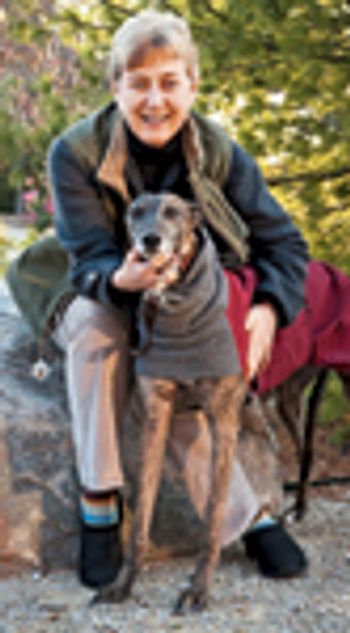
This veterinary internist says for cats owners to put themselves in their cats' shoes before shooting for diabetic remission as the ultimate goal.
Department of Veterinary Clinical Sciences
School of Veterinary Medicine
Purdue University
West Lafayette, IN 47907

This veterinary internist says for cats owners to put themselves in their cats' shoes before shooting for diabetic remission as the ultimate goal.

A look at which factors might make spontaneous normalization of glycemic control more likely in one of your feline patients.

If not, Dr. J. Catharine Scott-Moncriefl explains why you should be.

Dr. J. Catharine Scott-Moncrieff reveals the keys to insulin control.

In the normal dog fasting does not usually result in hypoglycemia. Therefore a serum glucose concentration < 60 mg/dl is almost always due to either organic disease or to laboratory error. In an animal with normal glucose homeostasis, insulin secretion is stimulated when the blood glucose is > 110 mg/dl; insulin secretion is depressed and secretion of hormones that oppose insulin (epinephrine, glucagon, cortisol, growth hormone) is stimulated when the blood glucose falls below < 60 mg/dl.

Diabetes mellitus (DM) is a common endocrine disease in dogs and cats characterized by an absolute or relative deficiency of insulin. This results in a decreased ability of cells to take up and utilize not only glucose, but also amino acids, fatty acids, and electrolytes. In addition the lack of insulin results in increased gluconeogenesis, glycogenolysis, lipolysis, ketogenesis, and protein catabolism.

Hypothyroidism results in decreased production of the thyroid hormones thyroxine (T4) and triiodothyronine (T3) from the thyroid gland. At least 95% of cases of canine hypothyroidism are believed to be due to acquired primary hypothyroidism. Destruction of the thyroid gland can result from lymphocytic thyroiditis, idiopathic thyroid atrophy, or rarely neoplastic invasion.

Approximately 80 to 85% of cases of hyperadrenocorticism in dogs are due to pituitary dependent hyperadrenocorticism (PDH), with the remainder due to an adrenocortical tumor (AT). Cortisol is the most common secretory product of the adrenal gland in hyperadrenocorticism.

Diabetes mellitus (DM) is a common endocrine disease in dogs and cats characterized by an absolute or relative deficiency of insulin. This results in a decreased ability of cells to take up and utilize not only glucose, but also amino acids, fatty acids, and electrolytes. In addition the lack of insulin results in increased gluconeogenesis, glycogenolysis, lipolysis, ketogenesis, and protein catabolism.

Hypoadrenocorticism (Addison's disease) results from failure of the adrenal glands to secrete glucocorticoids and mineralocorticoids. Most cases of hypoadrenocorticism are due to primary adrenal failure, resulting in deficiency of usually both cortisol and aldosterone from the adrenal cortex.

Published: December 1st 2011 | Updated:

Published: August 1st 2011 | Updated:

Published: August 1st 2011 | Updated:

Published: August 1st 2011 | Updated:

Published: August 1st 2011 | Updated:

Published: August 1st 2011 | Updated: